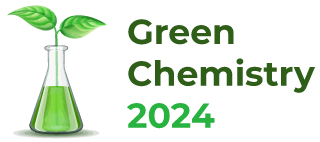Green Chemistry 2024

University of Tabuk, Saudi Arabia
Abstract:
Biological consideration, with the effect of chromium, comes from its prominent impact
on environmental pollution with a toxic effect on microbial organisms, plants, and mammals. High
amounts of chromium are discharged into different environments via different industries such as
dyeing and printing in textile industries, chemical manufacturing, leather tanning, and metal
plating. The hexavalent chromium ion [Cr(VI)] is known to be 500 times more toxic compared to
the Cr(III) cation. Herein, the removal of Cr(VI) from wastewater via antimicrobial or
photocatalytically active composites was currently performed using Cu2O@viscose,
TiO2@viscose, and Cu2O@TiO2@viscose. Whereas, for the first time, both Cu2O and TiO2 as
superior photocatalysts were exploited, to be impregnated within viscose as a supporting template,
for the preparation of superior or recyclable products for broad, repetitive, and easier applicability.
Viscose was preliminarily treated with Cu2O and TiO2 metal precursors to prepare
Cu2O@viscose, TiO2@viscose, and Cu2O@TiO2@viscose. The affinity for Cr(VI) removal is
observed to follow the order: Cu2O@TiO2@viscose> TiO2@viscose> Cu2O@viscose ≫
viscose. Thus, Cu2O@TiO2@ viscose exhibits superior affinity for acting as a photocatalyst.
Moreover, the highest percentage Cr(IV) removal was observed at 3.5 g/L as the photocatalyst
dosage. The study of recoverability revealed that the Cr(VI) removal percentage was estimated to
be 40% and 87% after one cycle, and was insignificantly decreased to 27% and 60% after five
cycles for Cu2O@viscose and TiO2@viscose, respectively. Whereas, by exploitation of
Cu2O@TiO2@viscose for Cr(VI) removal, the removal percentage was estimated to be 98% after
one cycle and insignificantly decreased to 78% after five repeated cycles. In summary,
Cu2O@TiO2@viscose was shown to have excellent antimicrobial performance and the highest
affinity for chromium removal, with the highest recoverability
Biography:
Omaymah Alaysuy has completed her PhD at the age of 33 years from University of Leicester, UK and followed that with postdoctoral studies in project with British Sugar Company at University of Leicester. She is promoted to Associate Professor in October 2023 in Physical Chemistry at Faculty of Sciences and working in the role of General Supervisor of Scholarships Administration at University of Tabuk. She is interested in Green Chemistry and Materials Science Applications.
